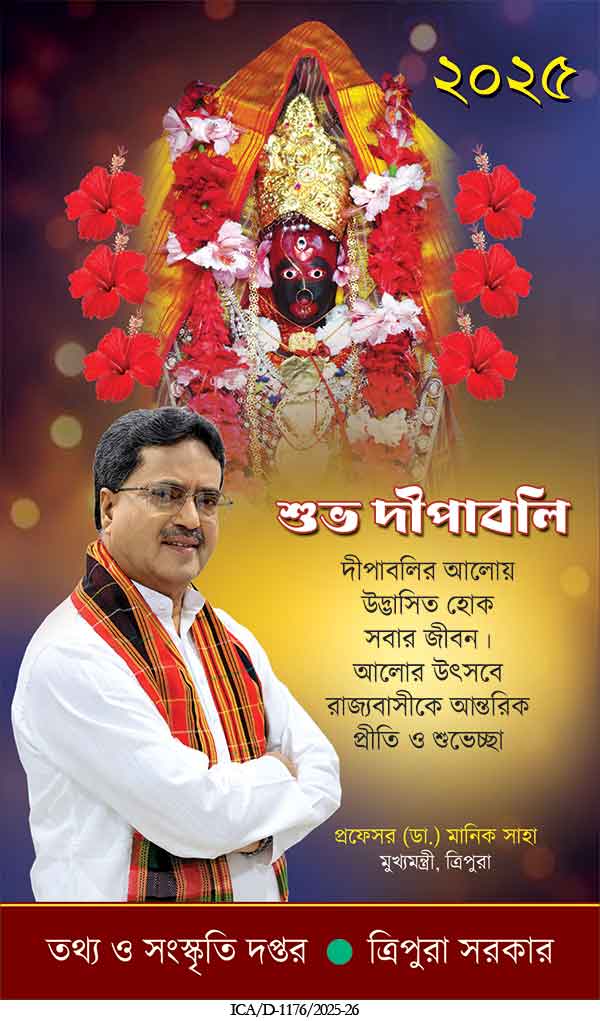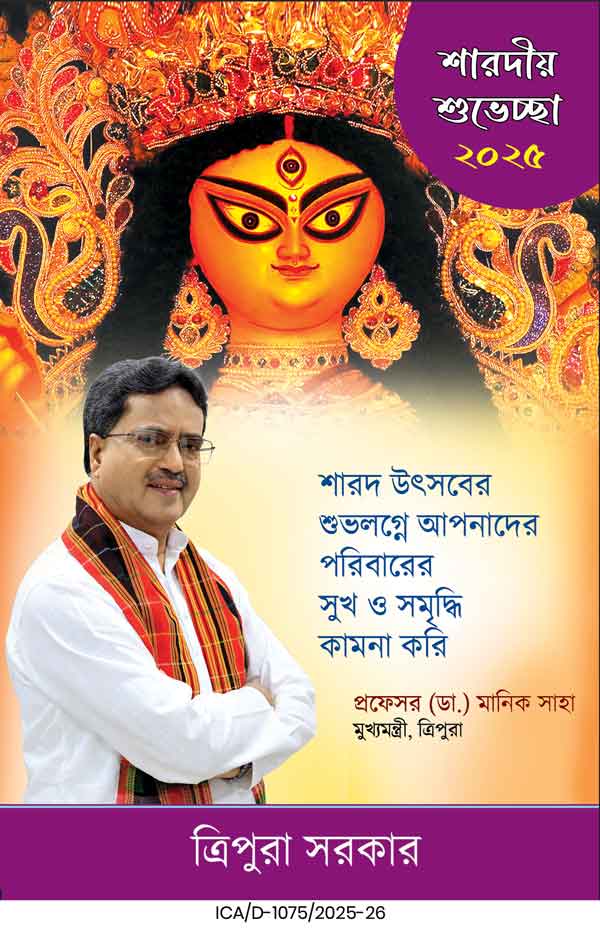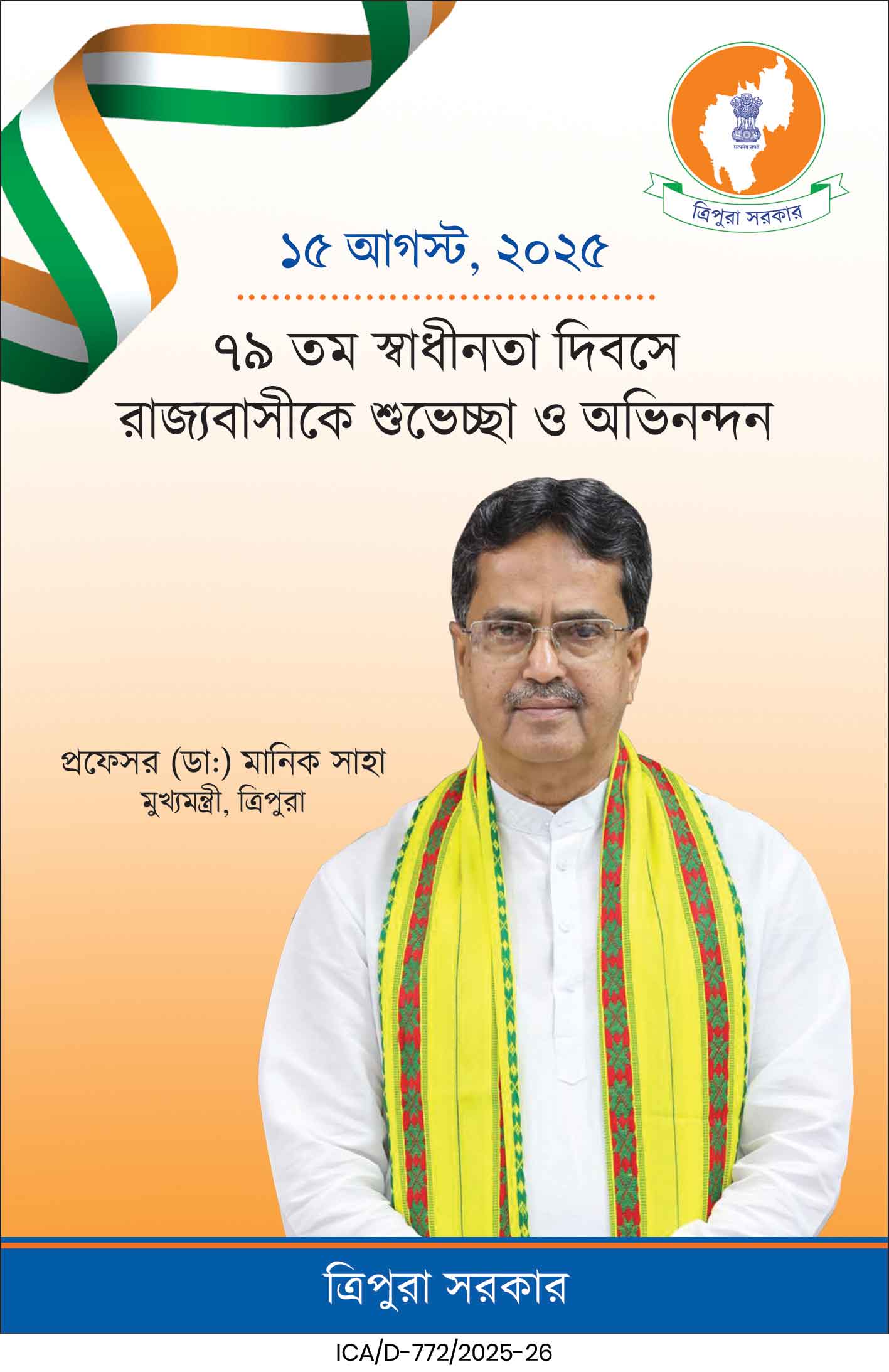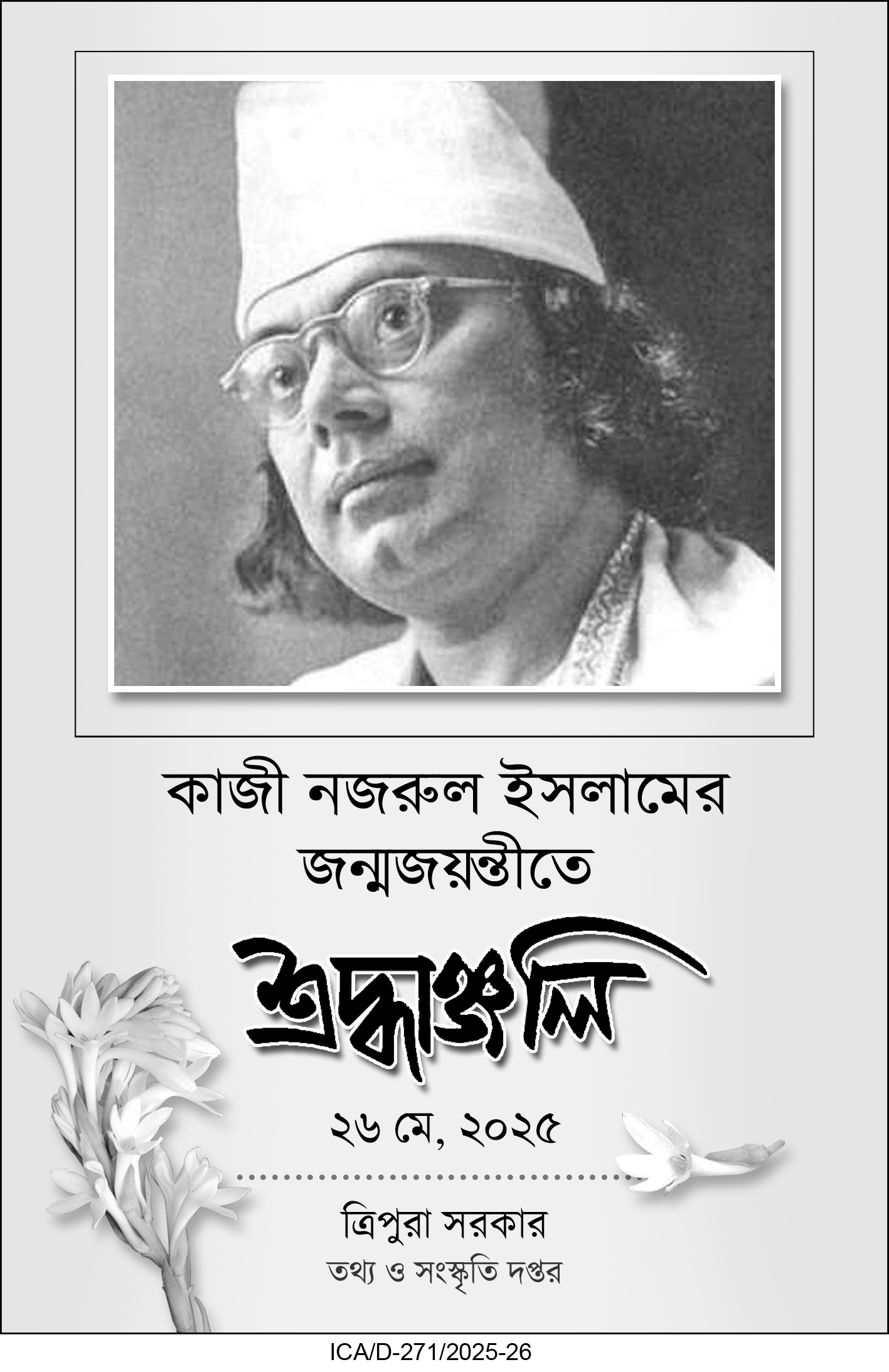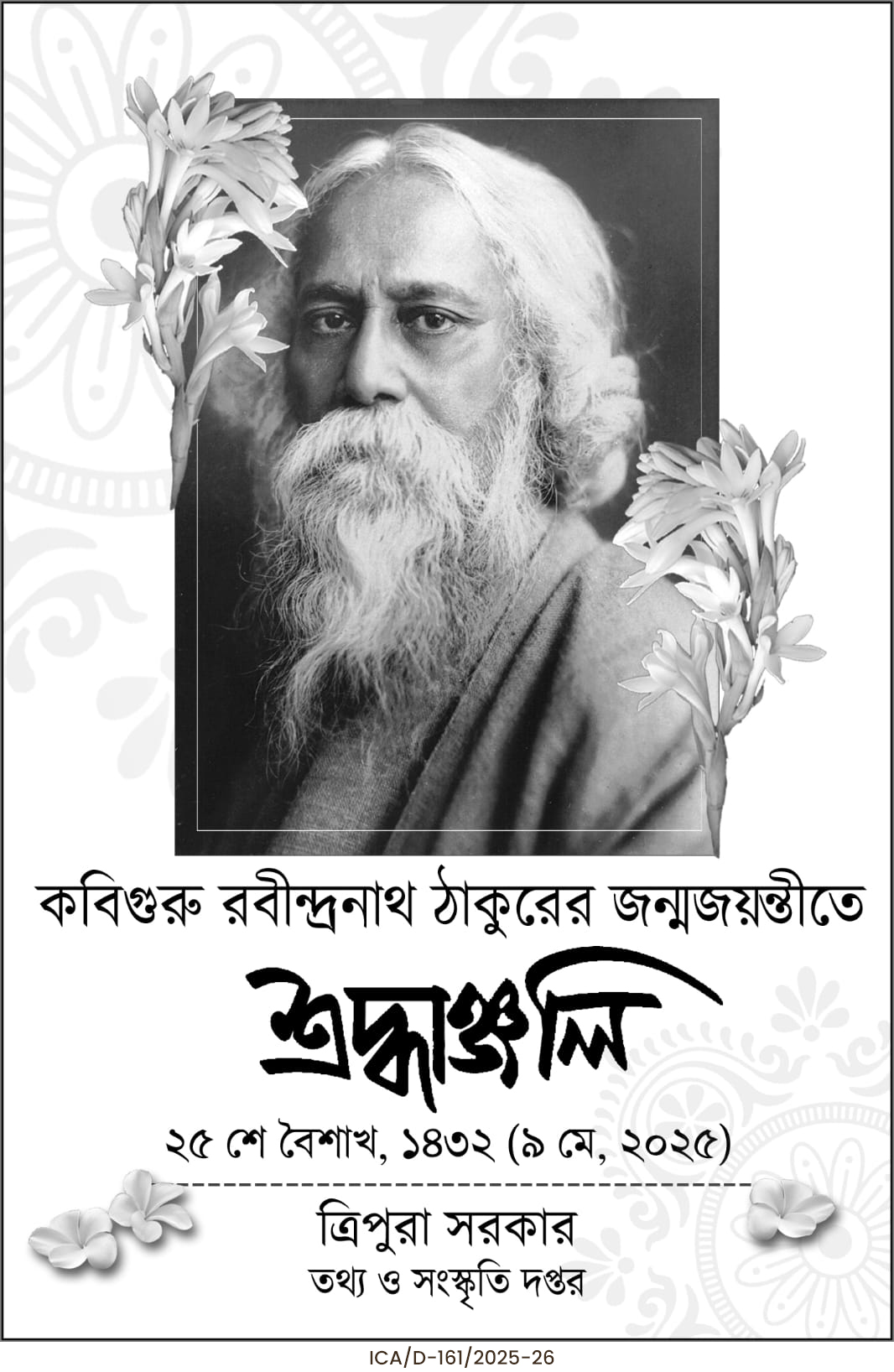
In an interview our paternal grandfather, Maharajkumar Brajendra Kishore ( Rabindranath O Tripura) recalled his meeting with Sister Nivedita the disciple of Swami Vivekananda, who worked for the upliftment of women and for the poorest of the poor. He said, “Sister Nivedita expressed her eagerness to learn about the women of the state. I told her the stories of two brave women of Tripura. We had heard these stories as children. When the Muslims invaded Tripura, the Maharaja at that time expressed his inability to protect his kingdom. Seeing the desperation of the people to defend the sovereignty of their land, the Maharani took up arms and led the army defeating the invaders. This story has been written in letters of gold in the history of Tripura.”
Brajendra Kishore went on with the other story, “The Maharaja had died and there was the tradition of Sati at that time in the neighboring state of Bengal and among the people of the plains. However, since the yuvraj (crowned prince) was a minor; the Maharani decided not to immolate herself on the funeral pyre of her deceased husband. She realized that her minor son would become a puppet in the hands of self-seeking people, so she took up the reins of power and taught her son the rules of administration. On the other hand, she ordered that the funeral pyre of her husband be kept burning. Once her son became capable of ruling Tripura, she performed sati; leaving behind a bright example of love for the country. Thus she became immortal.” It was however interesting to note that among the hill-people of Tripura there was no tradition of ‘Sati’. On the contrary widow remarriage was a normal practice. Therefore, it was rather confusing that the queen expressed her desire to immolate herself on the funeral pyre of her husband. It could only be explained as an outside influence.
Brajendra Kishore recalled, “On hearing these two stories, Sister Nivedita became much impressed. Even so many centuries ago in the remote State of Tripura, woman did not shy away from their duty towards their country and their people. She remarked that these stories of Maharani Tripura Sundari and Maharani Jayabati were glorious examples of Indian womanhood.”
In 1243 AD Maharani Tripura Sundari went to battle against the invasion of Tugan Khan on behalf of her husband Kirtidhar Manikya , who was also known as Sengthumfa. This story found a mention in the history of Bengal written by Major Charles Stuart. This incident was also described dramatically in the ‘Rajmala’- The Chronicle of the Kings of Tripura (Sengthumfa Chapter). The second story was that of Janhabi Devi (Jayabati) who ruled Tripura from 1783 to 1785 AD on behalf of her minor son Rajdhar Manikya and thus saved the kingdom from invasion and anarchy. Both these battles were for independence and to protect the sovereignty and integrity of their land against invaders and plunderers. These wars took place much before 1857 which is now accepted as the first war of Independence led by Rani Laxmibai of Jhansi.
There was another example of a Maharani standing up to her duty towards the throne and her people; it was the legend of the “Pathar Bati (Stone Bowl)”. There was a stone bowl, which was preserved amongst a tribe known as the Reangs in Udaipur; the ancient capital of Tripura. Incidentally, according to scholars , the term ‘Reang’ came from the distortion of the word ‘Biangma’ in their language, which had a similiarity with the Sanskrit word ‘Bihanga’meaning a bird. Therefore, the Reangs considered themselves to be the descendants ‘Garuda’; the mythical bird, which was the vehicle of the Hindu god Vishnu. This was an indication that Hinduism was deep rooted in the tribal society of Tripura. The Hinduism practiced here however, seemed somewhat different from elsewhere but intrinsically it highlighted the symbiotic relationship between man and nature – Prakriti and Purush.
The Rais or Chief of this tribe told a story which was related to this worshipped stone bowl. In the earlier times, on a certain day, the Maharaja performed the ritual of Gaang Puja (River Worship). It was then, that the banks of the Gumti River, which passed through Udaipur, were fenced off. No one was allowed to step into its waters. As the rituals were being carried out by priests, they saw a raft carrying tribesmen approaching. There was a sharp altercation between the priests and the tribesmen on the raft. They were finally taken into custody for disobeying the royal order and thrown into prison. When the news of this incident spread there was discontent among the Reang tribesmen, as they felt that a harsh treatment had been meted out to their brethren and so they revolted against the king. The Maharaja immediately ordered that the chiefs of the Reangs be captured and beheaded to quell the revolt. The Maharani on the other hand thought that it was not only cruel but also a grave sin to take the life of their subjects. She also knew that it was her duty to restrain her husband from committing such a sin.
She approached her husband and begged pardon for the Reangs; who were languishing in the prison. Initially, the King refused by saying, “If I set them free without exemplary punishment the Reangs will neither fear nor respect me any longer. In the future they would not remain under my control. Just imagine; what a bad precedent this would set for my other subjects”. The queen however, persisted, “Maharaj, I give you my word that they will become your most obedient and loyal subjects forever. Please forgive them”. On hearing this, the king thought to himself, “There was no harm in trying”. He finally gave in to the queen’s request and allowed her to visit the prisoners. The queen beseeched them to give up their revolt; she sympathized and shared their concern on many matters.
The Reangs were satisfied with what they heard from the queen and addressed her as ‘mother’. She then offered them milk in a stone bowl and said, “Now that you have accepted me as your mother and have taken the milk given by me, you are now our sons. So, promise me that you will never revolt in future against your father; the king.” The Reangs agreed and promised to become loyal children. As a reminder of this promise to future generations; they took this stone bowl with them. History stood proof that the Reangs went on and gave brave generals such as Rai Kachak and Rai Kasam to Tripura; they led their men to conquer far and wide.
The Reangs refered to the queen as Dayabati (The Compassionate One); one never knew if that was her name or whether it was attributed to her because of the generosity she had shown to them. It was interesting that in the earlier days the kings of Tripura were addressed by their subjects as ‘Fa’ meaning father and queens as “Buma’ (mother). The Queens of Tripura stand out for their simplicity and for being rooted in their land. These earlier queens wore the simple Rignai ( a piece of handwoven cloth around their waist much like the sarong worn by women in Malaysia and the Risha ( handwoven breast cloth) ; and on their foreheads was the heart shaped sindoor ( vermillion).They were very much unlike their counter parts in other states where Maharanis were highly ‘ decorated’ with jewellery and costumes. As a matter of fact wearing a saree ( the traditional dress elsewhere) came into the palace once the Maharajas began to marry into royalty of other states. Not only the saree but many other cultural influences also came into the palace and spread throughout the state.
Many early kings had two names one Sankritised and the other indigenous. For example Kirtidhar Manikya was also Sengthum Fa; the word Fa (Father) was suffixed to their names, maybe it had something to do with this legend. It was because of these stories of valour of the queens that Reverend James Long in his “Analysis of The Rajmala” (Asiatic Society Journal, Vol XIX, page 535) wrote, “The women exhibit a very different character from others generally, and in daring and moral powress reminds one of the females in Rajputana or of the Maratha country.”
( The view expressed are solely personal)

